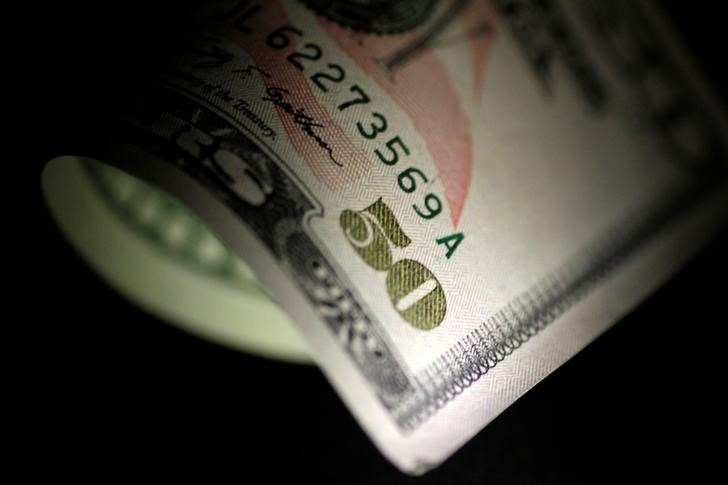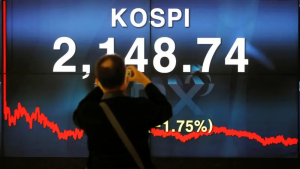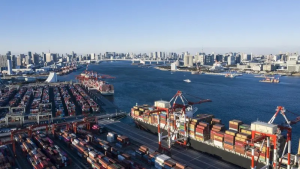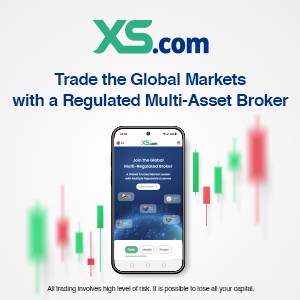The U.S. dollar surged higher Monday, boosted by the announcement of a trade deal between China and the U.S. over the weekend, raising hopes that the U.S. economy can avoid a damaging prolonged trade war.
At 03:30 ET (08:30 GMT), the Dollar Index, which tracks the greenback against a basket of six other currencies, rose 1.3% to 101.455, trading at a one-month high.
That said, the gauge is still down over 3% from the April 2 announcement of Trump’s "Liberation Day"
Dollar surges on trade deal The White House on Sunday announced that a trade deal with China had been reached after U.S. officials spent the weekend negotiating with their Chinese counterparts in Geneva.
More substance emerged Monday, with the two sides agreeing to a 90-day pause to soaring tariffs placed on each other. Additionally, Washington has moved to slash tariffs on China to 30% and Beijing’s duties on U.S. imports are being cut to 10%, the nations said in a rare joint statement.
Heading into the talks, U.S. President Donald Trump had raised tariffs on China to at least 145%, leading China to respond with retaliatory levies on American imports of 125%.
More trade negotiations are planned between the two, while both sides may conduct working-level consultations on relevant economic and trade issues.
“We have argued in recent weeks that the dollar likely requires a constant flow of positive news on trade de-escalation to keep recovering,” said analysts at ING, in a note.
“The Trump administration has so far provided it, and while the dollar’s recovery hasn’t been nearly as spectacular as in equities, there is a strong sense that Trump’s pragmatic shift on trade has trimmed the tail risks for the greenback.”
Aside from more trade news, this week’s focus is likely to center around the release of the latest consumer price index on Tuesday, as investors look for indications of how the trade spat has impacted the economy and thus expectations for further rate cuts by the U.S. Federal Reserve.
The odds for a June easing are now priced at just 17%, with July at 59%.
Euro potentially overvalued In Europe, EUR/USD traded 1.2% lower to 1.1109, with the single currency hit hard as traders surged back into the dollar in the wake of the news of a U.S.-China trade deal.
“A decisive break lower looks on the cards,” said ING. “The pair is trading 3% off its 21 April peak, but remains around 3% overvalued according to our short-term fair value model. That misvaluation is largely justified by the short-term rate differentials, which continue to heavily favor the dollar.”
The European Central Bank has cut interest rates seven times in the past year as inflation has been rapidly retreating, and policymakers have already started to lay the groundwork for another cut in early June.
Financial markets see a 90% chance of a rate cut in June and see another cut or two in subsequent months, while the odds of Fed rate cut next week are considerably lower.
3rd party Ad. Not an offer or recommendation by Investing.com. See disclosure here or remove ads. Traders are also keeping an eye on events in Ukraine, after President Volodymyr Zelenskiy said he was ready to meet Russian President Vladimir Putin in Turkey on Thursday for talks.
“A breakthrough in peace negotiations will be beneficial for EUR/USD, but the extent of the impact will be highly dependent on the market’s assessment of the sustainability of any truce,” ING added.
GBP/USD fell 1% to 1.3180, with sterling holding up slightly better than the single currency after last week’s announcement of a trade deal between the U.S> and the U.K..
Safe-haven yen slips back In Asia, USD/JPY traded 1.8% higher to 147.92, with the safe haven yen hit hard by the announcement of a U.S.-China trade deal.
USD/CNY traded 0.3% lower to 7.2143, with the Chinese currency supported by the easing trade tensions between Washington and Beijing.
Data on Saturday showed that China’s inflationary pressures persisted in April, with consumer prices declining for the third consecutive month and factory-gate prices experiencing their sharpest drop in six months.
The nation continues to grapple with the economic fallout from its ongoing trade battle with the U.S..











